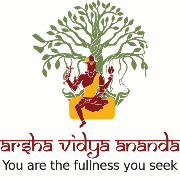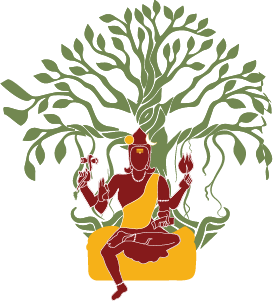Live Courses, Camps and Classes
Sri Nataraja Stotram – The Cosmic Dance of Shiva in the heart
By Swamini Brahmaprajnananda Saraswati
3rd – 7th March 2024, 8 – 9 pm IST on Zoom
About Sri Nataraja Stotram – Rishi Patanjali (who wrote the Yoga sutras) wanted to receive the Darshan of Lord Shiva but was denied at the gate by Shiva ganas. And so, he spontaneously composed this prayer – Sri Nataraja Stotram in praise of Bhagavan Shiva.
In response Shiva not only gave darshan to his devotee but also danced to the rhythm of the Sri Nataraja Stotram.
Most of its 10 verses end with the refrain, ‘para cidambara naṭaṁ hr̥di bhaja’. May one worship the dance of the great Shiva in the heart.
Who can enrol?
You are a devotee and/or a Vedanta sadhaka and you want to perform sadhana leading to Mahashivaratri.
You are a practicing Hindu and/or are of Hindu origin.
You commit to attending all the five days of the course. In case you miss one/two days, please catch up by Mahashivaratri, 8th stretching to 9th March.
Please join us on 8th March, Mahashivaratri for an open event from 8.30 – 10.30 pm IST
which will include Rudrabhishekam puja,
Talks by Swami Brahmavidananda and Swamini Brahmaprajnananda,
Offerings of music, dance, yoga and martial arts.
Join – https://us06web.zoom.us/j/81621005221
passcode – shiva
What will happen during the course from 3rd – 7th March?
Swamini Brahmaprajnananda will chant the verses and give an overview of the meaning. The class will include a short meditation session.
Just listening with a clear sankalpa will deepen your devotion, strengthen your connection with Shiva and bestow you with complete blessings.
What does the sadhana involve?
1. Attending the class
2. Chanting the mantra
3. Anything else that you choose to do. Please read this for more details – Mahashivaratri and how to celebrate it
Chanting the mantra – -For each of the five days you will be chanting the panchakshari mantra – ॥ ॐ नमः शिवाय ॥.
From the time that you enrol in the course, you will commit to chanting 1/3/5 malas of the mantra ॥ ॐ नमः शिवाय ॥ every day, leading up to Mahashivaratri. Each mala involves a count of 108 times.
You will be chanting the mantra in your own time starting 3rd March, every day. You could start earlier as well.
Please note that your pronunciation is correct and you just chant as an offering, with an expectation that your offering is received by Shiva. The mind wandering to other things is normal. The practice involves bringing the mind back to the mantra again and again.
Listen to The What, Why and How of Japa
If you have any queries please write to info@discoveratma.com
Suggested donation – Rs 500 or its multiples
Please credit your donation to the following account.
Name – Swamini Brahmaprajnananda Saraswati,
Savings Ac no: 06681000006094
Bank Name: HDFC Bank Ltd Mumbai
Swift code: HDFCINBB
IFSC code: HDFC0000668.
or Google pay – brahmaprajnananda@okhdfcbank
For international transfers donate securely via
Xoom or Wise
or By paypal to
https://paypal.me/SwaminiB
(brahmaprajnananda@gmail.com)
Please account for an additional PayPal fee charge of 4% of transaction value
If you are not able to donate this amount and are still keen to do the course, please do seva at your place of residence and send us a request at info@discoveratma.com
Zoom link – You will receive the zoom link for all sessions of the course and a soft copy of the text – Sri Nataraja Stotram by 2nd March only.
You will also receive the link to the video playlist on 4th March. Recordings will be uploaded within 12 hours of the session.
A few suggestions to make the most of the course –
For the week leading to Mahashivaratri, try to reschedule your usual activities so that you have adequate time for the class and some additional time for sadhana of chanting some shlokas or mantras that you know.
Try to complete a light dinner before the class (This applies to people attending at IST)
Before class, please watch your face, hands and feet.
Do not eat or drink anything during the class except for water.
Try to not get up during the class
If you have limited privacy at your home please use headphones.
Do keep your video on because I need to see you while teaching. However, if you have intermittent connection you can keep the video off from time to time.
Please mute your mic and do not use the chat box during the class unless invited to. You can ask questions at the end of the class.
For women who have their menstrual periods it is ok to attend but not chant any mantra.
How does one register?
Please fill up this form here – https://forms.gle/KzpGFU48WzL93koGA
Submission of the form is considered acceptance.
You will receive no additional confirmation email of the submission of your form.
Thank you and let us make the most of this Mahashivaratri by offering our sadhana to Bhagavan Shiva.
Gita Amrtam Course
A life of connection and oneness through Self mastery and Self discovery

The Bhagavad Gita reveals the vision that you are amrtam (not subject to death) and the joyful way of living to see the vision. The Gita is Amrtam because it is a complete teaching of the sweet essence of the Vedas. Jagadguru Adi Shankaracharya reminds us that to ‘the one who has studied the Bhagavad Gita even a little, there is no discussion with Yama, the Lord of Death.’(Bhaja Govindam – 20). Such is its glory!
Stotram Chanting

To be able to pray is a huge privilege. And all of us (irrespective of our gender, class, nationality differences) have been blessed with this privilege to pray.
A prayer is centred on a self conscious and self-judging person relating to an altar. The mode employed by the person praying is never the same – it differs from person to person. Even for a given person it differs from time to time. A prayer can be a simple mental or oral chant or a strict elaborate vedic ritual.
There are three different forms of karma, action, in prayer: kāyikam, physical, vācika, oral and mānasam, mental. Performing a ritual is a physical form of prayer. Singing praises of Bhagavān is an oral form of a prayer while chanting a mantra silently is a mental prayer.
Puja




